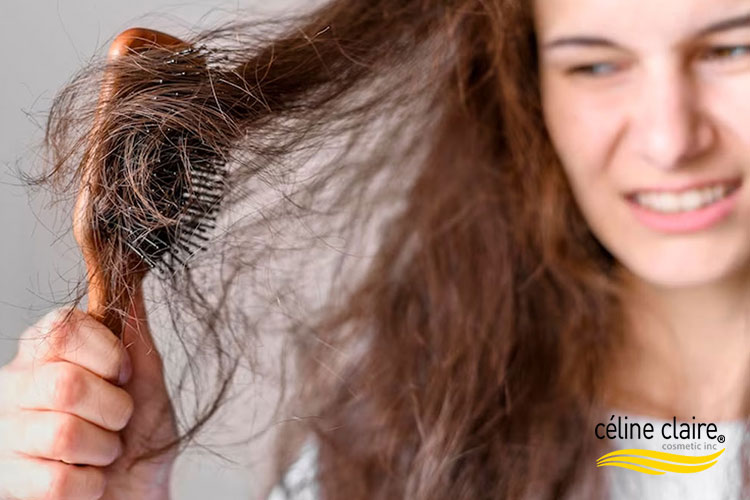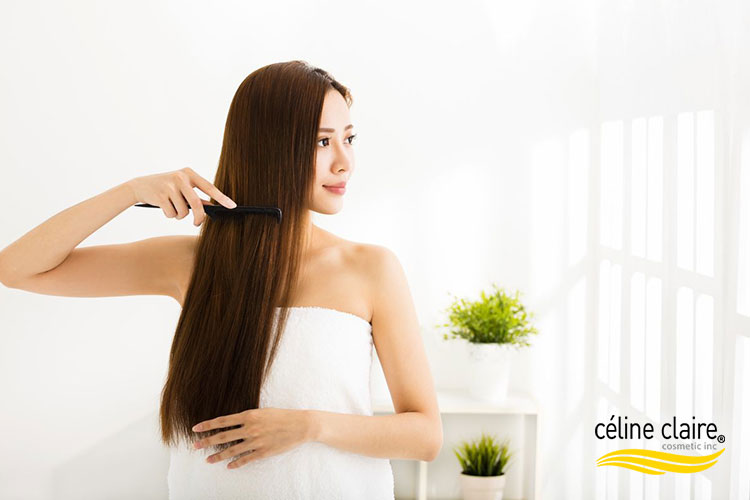
What is the Best Treatment for Dry Hair?
If you feel rough, brittle strands slipping through your fingers when touching your hair, you’re not alone. For many of us the struggle with dry hair is an all-too-common experience.
Whether it’s the daily use of heat styling tools, environmental exposure, or simply not having enough time for proper care, many of us face the consequences of neglecting our haircare.
But here’s the good news: dry hair isn’t a life sentence. With the right approach and hair treatment products, you can bring your hair back to life.
In this article, we’ll walk you through the causes of dry hair, how to spot the signs of damage, and most importantly, the hair repair treatments that can help you reclaim that soft, touchable texture. From quick home remedies to professional solutions, we’re here to guide you through every step.
What Are the Characteristics of Damaged Hair?
there are some unmistakable signs that dry, damaged hair often reveals, and once you know them, you’ll recognize them instantly.
Splitting the Bottom of the Hair
When hair is exposed to harsh conditions, be it heat, chemicals, or the elements, it starts to fray. The ends of the hair begin to split. This is what we commonly refer to as split ends, the ultimate cry for help from our hair.
A sign of split ends is when the bottom of your hair looks uneven or “feathered.” This usually happens when the protective cuticle layer wears away, exposing the inner core of the hair, making it more vulnerable to breakage. Those with long hair or the ones who use heat-styling frequently are particularly prone to split ends.
Rough Texture
But it’s not just about what your hair looks like, it’s also about how it feels. Damaged hair can often be described as having a rough texture. This roughness occurs because your hairs natural oils have either been stripped away or are no longer enough to keep the hair nourished.
This leaves the strands dry and when hair is dry, it can feel rough and lifeless. This rough texture is a clear indication that the hair need treatment.
Entangled Hair
Tangles form when the cuticles become rough or broken, causing strands to stick to one another instead of sliding freely. The more you try to force a brush through them, the more you risk breaking the hair, resulting in further damage and dryness.
Brittle Hair
Brittle hair is one of the most obvious signs of dryness. When hair is brittle, it breaks quickly under light stress, whether from brushing, style, or something as simple as running your fingers through it.
The root cause is a lack of moisture and elasticity in the hair, making it more vulnerable to breakage.
To fight brittleness, hair repair treatments that focus on repairing and reinforcing the hair’s internal structure are required.
Many hair treatment products contain proteins such as keratin and amino acids, which can help to restore flexibility and strength.
Factors That Lead to Dry and Damaged Hair
Dry and damaged hair does not appear overnight; rather, it is the result of a number of causes that gradually affect your hair’s health. To maintain your hair looking its best, it’s important to understand these aspects and how they relate to any issues you may be facing.
Environmental Factors
Environmental factors are one of the most significant causes of hair damage. Sunlight, pollution, and wind can all damage your hair. UV radiation from the sun can weaken your hair’s outer layer over time, causing dryness, and air pollution can coat your hair, causing it to feel dull and lifeless.
Heat Styling
Heat styling tools, such as flat irons, curling irons, and blow dryers, are among the leading causes of hair damage. Heat removes moisture from the hair, resulting in dryness, split ends, and even brittleness.
Chemical Treatments
Dyeing or chemically straightening your hair can considerably weaken it. Chemicals used in coloring or relaxing treatments damage the hair’s natural structure, resulting in dryness, split ends, and even breaking.
Poor Hair Care Practices
Sometimes the way we treat our hair is the most important factor in its dryness and damage. Over-washing, using harsh shampoos, or missing conditioner may reduce your hair’s natural oils, making it dry and prone to breaking.
Further, excessive brushing or towel-drying can cause physical damage to your hair, particularly while it is damp and vulnerable.
Solutions for Treating Dry and Damaged Hair
Now that we’ve identified the causes, it’s time to look at the solutions. Thankfully, there are a number of hair repair treatments and hair treatment products available that can bring life back into your dry hair.
Hydrating Masks and Deep Conditioners
Hydrating masks and deep conditioners are necessary for anyone with dry hair. These treatments provide your hair a powerful burst of moisture, which helps to restore its softness and manageability.
Look for masks that contain argan oil, shea butter, and coconut oil, which are known for their hydrating benefits. Regular use of a deep conditioner can help lock in moisture and prevent your hair from additional damage.
Leave-In Conditioners and Serums
Leave-in conditioners and serums provide an additional layer of protection throughout the day. These lightweight solutions hydrate your hair while also shielding it from environmental harm and heat styling.
Look for serums that contain silicones or oils, which can smooth the hair cuticle and give it shine without weighing it down.
Protein Treatments
Protein treatments can save severely damaged hair, whether caused by heat, chemicals, or environmental conditions. Hair is mostly composed of protein, so treatments that help restore and strengthen the hair shaft are essential.
Trimming Regularly
One of the simplest ways to keep your hair looking healthy is by getting regular trims. While this might not technically be a treatment, it is an important part of maintaining healthy hair. Trimming off split ends prevents them from traveling up the hair shaft and causing more damage.
Introducing Products to Treat Dry Hair
There are many hair treatment products out there, but finding the right one for your hair type is what really matters. we recommend Celine claire Argan Oil Hair Mask, which is formulated specially for profoundly dry and damaged hair.
It’s a 5-minute hair mask that provides your hair with deep moisture and nourishment. As a cruelty-free hair mask, we ensure that no animals were harmed in the production process.
By having this product in your routine, you’re giving your hair the best chance at recovery and long-term health.
Product purchase link: Celineclaire Argan Oil Hair Mask
Conclusion
Dry and damaged hair can seem like a difficult struggle, but with the correct guidance and products, you can win. Understanding the causes of hair damage and selecting specific hair repair treatments is needed for restoring your hair’s health. Recognizing triggers, such as environmental factors, heat styling, or poor hair care habits, helps you to take action. You may revive your hair, one strand at a time, by using hair treatment products that hydrate, protect, and strengthen it on a regular basis.
FAQs
What are the best hair treatment products for dry hair?
Deep hydration and repair-focused hair treatment products are best for dry hair.
How often should I use a hair repair treatment?
Severely damaged hair needs treatment weekly, while bi-weekly or monthly works for maintenance.
Can I repair split ends with hair treatment products?
No, but hair repair treatments can prevent future split ends and strengthen hair.
Is heat styling damaging for dry hair, and how can I protect my hair from it?
Yes, apply heat protectant and use hair treatment products to combat heat damage.
What causes hair to become dry and brittle?
Heat styling, chemicals, and lack of moisture. Use hair repair treatments to restore moisture.





